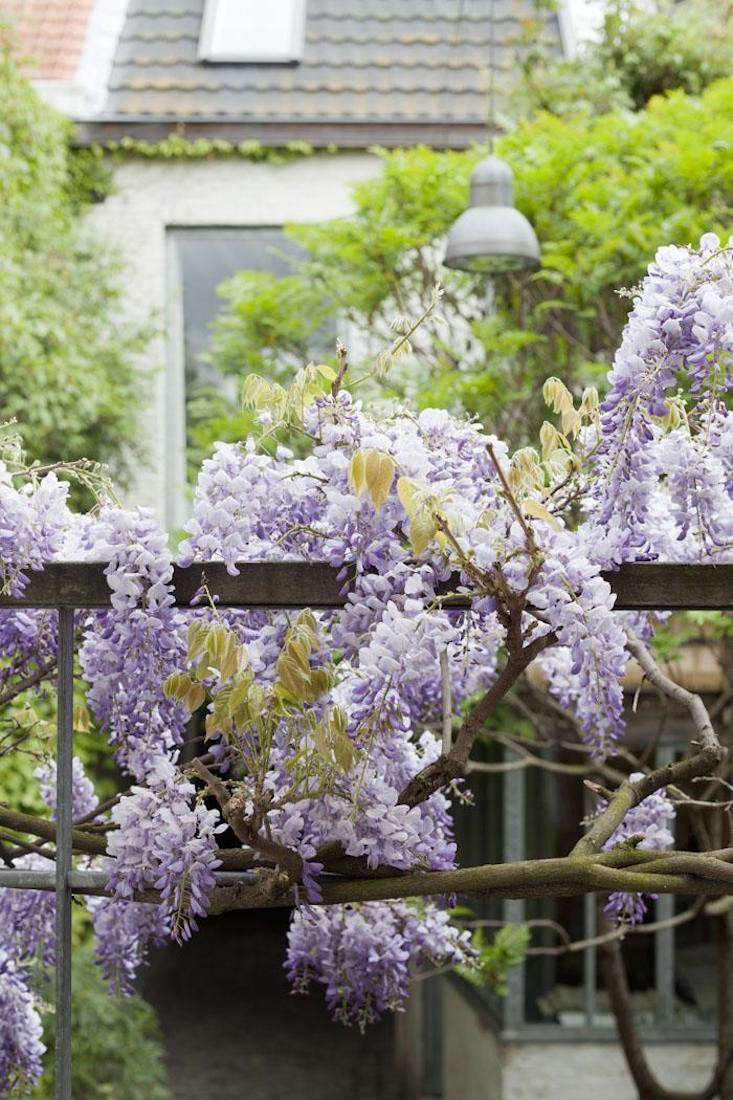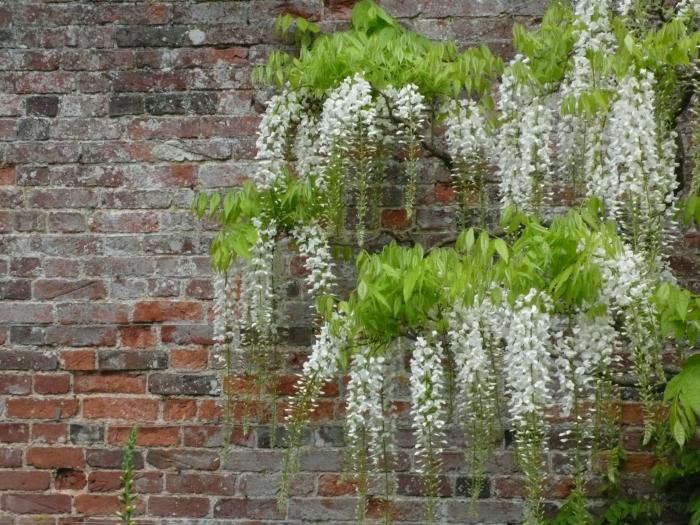Wisteria: “The Houseguest That Never Leaves”
You invited them to stay for a few days, and now it has been weeks. Although you asked them to stow their bags on the luggage rack and place their coats and boots in the mudroom, their belongings are strewn helter-skelter all over the place. You check the fridge and notice the groceries you stocked this morning are almost gone. At your wits’ end, you wonder, what do I say to these inconsiderate guests? This is a conundrum that those who grow wisteria often face:
Above: Photograph by Bart Kiggen. For more, see Radical Urban Gardens from Antwerp.
It can be delightful to host guests, but ones you can manage, and in controlled doses. Wisteria makes for lovely company, with fast-growing vines that can camouflage unsightly architecture or beautifully ornament a trellis, and is willing to sing for its supper with an opulent spread of thickly clustered flowers that make a delicious treat for honeybees. Until you realize: these woody climbing vines native to parts of the US and Asia have eaten you out of house and home.
Above: Photograph by Nicole Franzen for Gardenista. For more of this Brooklyn garden, see The Magicians: An English Professor and a Novelist Conjure a Garden.
The vines should be planted in spring or fall, with from 10 to 15 feet of space per plant to ensure they don’t choke out the rest of your garden. It is important to set strict limits. Design a trellis system in advance so the vine will climb where you want it to, and not cross any lines.
Above: “Wisteria floribunda ‘Alba’ provides vertical scent whether it is grown the usual way on a wall or as a trained standard,” writes Kendra. For more, see Expert Advice: 10 White Garden Ideas from Petersham Nurseries. Photograph by Kendra Wilson.
To keep wisteria vines in their place, don’t be afraid to reprimand these guests with your pruning shears, or even—and this is where the metaphor ends—to smack them around a bit. Wisteria won’t even take the hint; digging in and using a shovel to damage their muscular roots actually encourages them to flower.
Cheat Sheet
- A spring bloomer, wisteria’s flower colors include blue, purple, and white.
- Many cultivars have strongly perfumed flowers.
- Give wisteria plenty of space to spread (it will whether you want it to or not) to prevent it from overtaking and strangling nearby shrubs and trees.
Keep It Alive
- Wisteria is a hardy perennial vine in USDA growing zones 4-9.
- Plant wisteria in spring or fall.
- Prefers full sun and does not need additional water in areas that receive more than 1 inch of rainfall annually.
Above: Photograph by Kendra Wilson. For more, see Design Sleuth: What to Grow on a Brick Wall.
The best way to keep wisteria in check is with religious pruning. “You really should never turn your back on wisteria,” says garden designer Tim Callis. “Deep down inside it’s a thug, and it wants to conquer the world. The best thing to do is to really make a commitment to prune it after it blooms.”
Prune wisteria two or three times over the course of the growing season. In late autumn, prune “a lot of extraneous, long, thin stems coming off main shoots,” says Callis. Also check at the base of the plant for runners. Every 8 to 12 inches, wisteria will start to root and become another plant.
Above: A wisteria vine blankets a steel arbor in Brooklyn. designed by Kim Hoyt Architecture/Landscape. Photograph by Dan Wonderly. For more, see The Garden Designer is In: Kim Hoyt Architecture/Landscape.
For more vines and climbers, see:
- Gardening 101: Wild Grape Vine.
- Flower Nation: Invaders, Migrants, and Weeds in the British Garden.
- Paradise Found: Designer Dan Pearson’s Modern Garden for a Medieval Castle.
Finally, get more ideas on how to successfully plant, grow, and care for wisteria with our Wisteria: A Field Guide.
Finally, get more ideas on how to plant, grow, and care for various vines and climbers with our Vines & Climbers: A Field Guide.

















Have a Question or Comment About This Post?
Join the conversation (0)